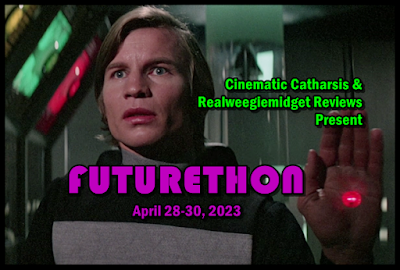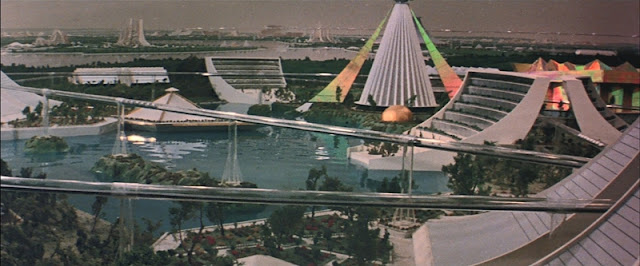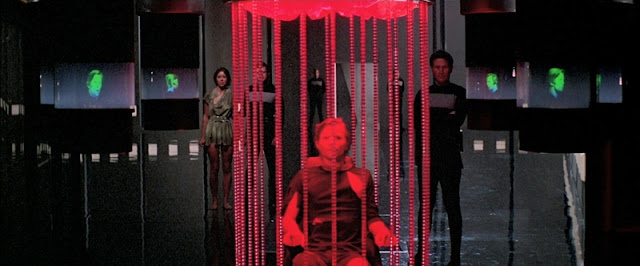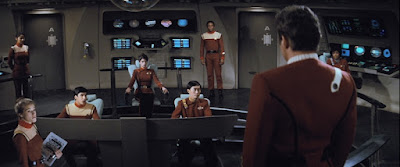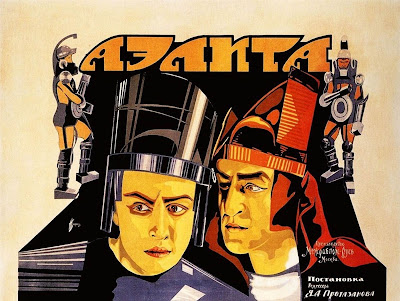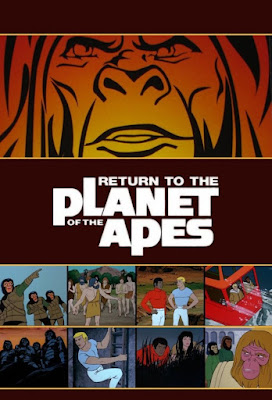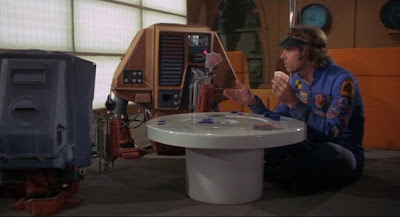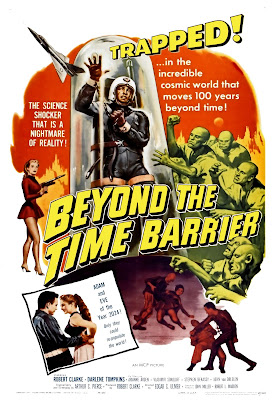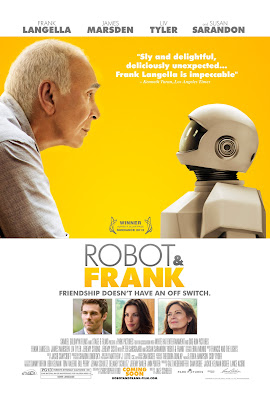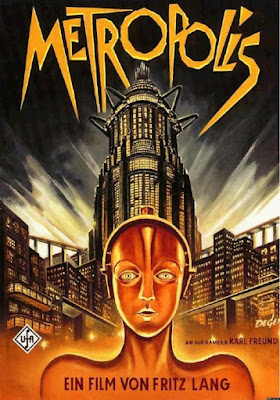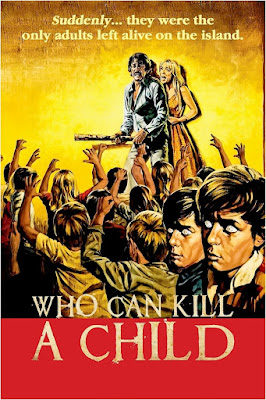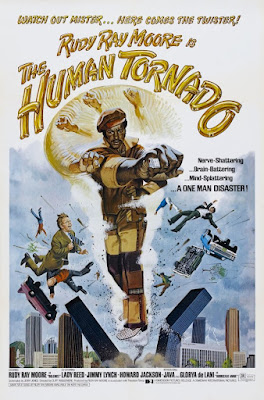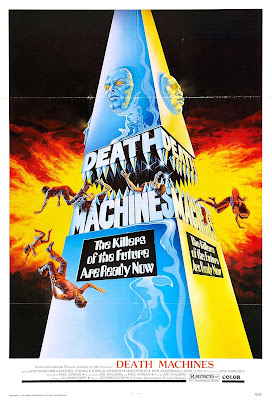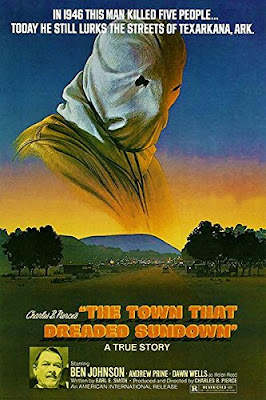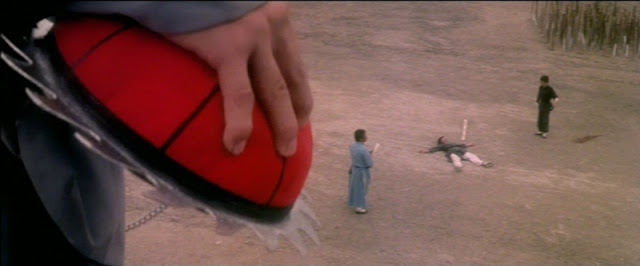(1976) Directed by Michael Anderson; Written by David Zelag
Goodman; Based on the novel by William F. Nolan and George Clayton Johnson;
Starring: Michael York, Jenny Agutter, Richard Jordan, Roscoe Lee Browne,
Farrah Fawcett and Peter Ustinov; Available on Blu-ray and DVD
Rating: ****
“At the beginning, you see that Logan is very much a
creature of his society. He goes along with the accepted mores and standards,
and this is the way life is lived. It’s when the idea that there was an
alternative way of life, a much more humanistic way of living – When this germ
is planted, I think it comes as a revelation to him that there is another way
of living life, and he gets into this secret society, and of course it changes
his life, and of course, the direction of the story.” – Michael York (from 2009
DVD commentary)
A million thanks to my co-host-with-the-most, Gill Jacob
from Realweegiemidget Reviews,
for entertaining my cockamamie idea to hold the Futurethon. I’m thrilled to see
so many talented bloggers hopping aboard, and hope you’ll check out all the
terrific posts!
Let’s face it, utopias are dullsville. They represent an ideal
world, where everyone lives in harmony, and conflict is a thing of the past. But
if everything works perfectly, and everyone’s happy, where’s the drama? Dystopias,
on the other hand, are where it’s at., Logan’s Run was loosely based on
the novel of the same name by William F. Nolan and George Clayton Johnson. For
reasons of practicality, the mandatory age limit was bumped up from the original
story’s 21 to 30. Filming took place in Dallas and Fort Worth, Texas,* using
available structures, and in Los Angeles utilizing some of MGM Studios’ massive
sound stages.**/*** Special mechanical effects expert Glen Robinson, who worked
on the classic MGM sci-fi film, Forbidden Planet (1956), created the
various vehicles and mechanical devices, while Bill Thomas designed the many
polyester and spandex costumes.
* Fun Fact #1: One of the largest shooting locations
employed for the futuristic city was the 5-million-square-foot Dallas Market
Center. The Fort Worth Water Gardens stood in for the terraced area outside the
domes.
** Fun Fact #2: An abandoned sewage treatment plant near LAX
stood in for the watery subterranean complex beneath the city.
*** Fun Fact #3: For the underwater scenes, the filmmakers used
the same pool where Esther Williams performed her aquatic antics.
When the
light blinks red, you’re dead.
It’s the year 2274, long after a worldwide cataclysm (or
several), and the youthful population (if you ignore the suspicious absence of people
of color) resides in an enormous domed city, sealed off from the outside, free
to indulge in their hedonistic fantasies (I’m assuming STDs have been
eradicated), without the burden of responsibilities or money. The automated
environment takes care of their every need, so work (for most) is an
unnecessary evil. There is a downside, however, to this idyllic existence – everyone
possesses a color-changing “lifeclock,”* implanted on their hand at birth, which
marks the inevitable countdown to age 30 (think of it in ‘70s terms, as a
sinister mood ring). What passes for religion in this society is a belief in “renewal,”
which I presume is a kind of reincarnation or rebirth. For most, their final
duty is to participate in the ritual of “Carousel,” a ghoulish spectator sport
(inspired by the Roman circus, according to Director Michael Anderson) where people
can watch their peers undergo their morbid rite of passage. Participants float
around a rotating platform, encouraged with shouts of “Renew!” from the fervent
audience, before being snuffed out of existence. I couldn’t help but wonder what
the attendance rate was. Considering the fact that the outcome of Carousel
never changes, you’d think this would get boring after a while (So many
questions, so few answers.). For those relative few who decide Carousel isn’t
their thing, they become “Runners,” who frantically search for a means of
reaching a refuge known as “Sanctuary.” But there are only so many places to
run in a sealed city, and the city has ways of dealing with dissenters.
* Fun Fact #4: According to costume designer Bill Thomas, the
majority of the costumes for the city-state’s residents were color-coded to the
characters’ crystals, which in turn corresponded to their ages: At birth, the
crystal was clear, shortly afterwards to age 12, yellow; from 12 to 24, green,
and 24 to 30, red.

Logan 6 (Michael York)* is part of an elite subset of the
population, called “Sandmen,” who enforce the age limit, hunting down and terminating
runners. Logan and fellow sandman Francis (Richard Jordan) take a sadistic glee
in carrying out their work, enjoying the thrill of the chase. But Logan, at
least, is beginning to experience an existential crisis, wondering about his
role in society and whether renewal is a real prospect. His pal, Francis, cautions
that it’s better not to question anything. An anticipated night of casual sex
turns into a moment of self-doubt, which becomes the seed of something much more
perplexing. While searching for an anonymous lover on the “circuit,” he meets
Jessica 7 (Jenny Agutter), who isn’t exactly a fan of sandmen (when challenged
about his job, Logan replies, “I’ve never killed anyone.”). After recovering a
chrome symbol from a terminated runner, he approaches the city’s computer,**
seeking the meaning of the item. The computer changes his red crystal to
blinking status, effectively wiping away four more years of life, and making
him a runner. His new mission: find and destroy Sanctuary. Jessica is
understandably skeptical about Logan’s sudden change of heart, torn between
potentially betraying her underground group and helping someone in need.
* Fun Fact #5: According to Anderson, the original casting
choices (who either declined or were reconsidered) included John Voight for
Logan, Lindsay Wagner for Jessica, William Devane for Francis, and James Cagney
(who was semi-retired at the time) for Old Man.
* Fun Fact #6: The computer’s authoritative, vaguely seductive
voice was provided by producer Saul David’s assistant, Lara Lindsay, who also
played a runner terminated by Francis.
Their quest for Sanctuary is fraught with peril at every corner,
especially from Box (Roscoe Lee Browne),* a menacing robotic man (although Box
attests that he’s something else: “I am more than machine. More than man. More
than a fusion of the two.”). One swift kick would probably topple the clunky
robot/cyborg, but Browne’s deep, mellifluous voice demands our attention. As a
kid, Box terrified me, and it’s not difficult to see why, considering the
chilling (pun intended) prospect that he saw no difference between freezing
seafood and freezing humans. Where did he come from, and who put him there in
the first place? Why was he compelled to carry out his obsolete, programmed
imperative from possibly centuries ago? The answers are lost in the past.
* Fun Fact #7: The top-heavy self-propelled Box costume
(powered by drill motors) was piloted by actor Roscoe Lee Browne, who
controlled the speed with his foot, and could change directions using his
knees.
When Logan and Jessica meet the Old Man (Peter Ustinov),* the
sole human survivor in the outside world, they’re shaken to their very core,
confronting love, relationships and mortality. He lives amidst the ruins of
Washington D.C. and the dilapidated Senate chambers,** now populated by an
assortment of cats.*** As opposed to the serious characters we’ve met, so far, he’s
a breath of fresh air with his largely comic role (Ustinov improvised much of
his dialogue), spouting random passages from T.S. Eliot’s “Old Possum’s Book of
Practical Cats.” (Long before Andrew Lloyd Weber got his mitts on the poem for
his musical).
* The most distressing thing, revisiting Logan’s Run,
so many years later, is that I’m now the same age that Ustinov was during
filming. Sigh.
* Fun Fact #8: In a deleted scene, described by Anderson, Logan
and the Old Man sift through a stack of presidential portraits, only to find one
of Richard Nixon. While the Old Man doesn’t recall his name, he comments that
he was supposed to be “Tricky.”
** Fun Fact #9: More than 150 cats from the Cat Care Shelter
in West Los Angeles were employed for the scenes. Because they were constantly
in motion, maintaining continuity with so many felines, was tantamount to
(ahem), herding cats.
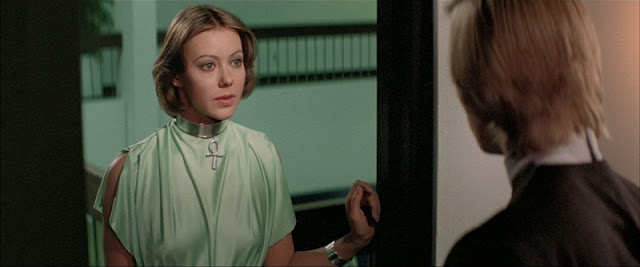
It’s safe to say that Logan’s Run would never get a “PG”
rating (typically reserved for more family-oriented material) today, but hey, it
was the ‘70s, right? Despite the greater latitude afforded to PG films in the ‘70s,
Director Michael Anderson fought with the censors on several scenes, notably the
Love Shop sequence (depicting a continuous orgy), which was cut by about
two-thirds (more is implied than shown). Another scene that likely raised an
eyebrow then features Box’s gallery of frozen victims (played by nearly naked
actors/actresses standing motionless). What specifically struck my then
pre-adolescent eyes, was my first cinematic crush, Jenny Agutter, as Jessica.
Why Agutter, and not Farrah Fawcett (who plays Holly, a doctor’s assistant, at
the “New You” face-changing clinic)? While Ms. Fawcett looked undeniably
fetching in her form-fitting glittery green dress (and in high school was
probably voted “Most Likely to Adorn Horny Adolescents’ Bedroom Walls in Poster
Form”), she always seemed out of my league, something to be admired from afar,
like the Mona Lisa or a six-figure automobile, but not exactly girlfriend
material. Ms. Agutter, on the other hand, was the archetypal “girl next door,”
attractive, yet refreshingly down to earth. I could see myself sitting down and
having a conversation about anything, ranging from philosophy to the existence
of werewolves (okay, maybe I should steer clear of that subject). Of course,
what really caught my attention, as an impressionable 8-year-old, was Jessica’s
outfit that left little to the imagination,* and a later scene (when she
changes out of her tattered costume and into a fur rug) that helped fill in the
blanks (um… excuse me while I dump a bucket of cold water on my head).
* As my mom was fond of saying, “Nice outfit she’s almost
wearing.”
The dystopian world depicted in Logan’s Run implies that
civilization has hit a dead end. No one makes any new discoveries, and there’s
no desire to go outside the cushy confines of the domed city. The society works,
in part, because no one questions anything or openly criticizes the
establishment. Former friends Logan and Francis represent opposite ends of the
spectrum. Francis has embodied the doctrine fed to him from day one, seeing his
work as a Sandman to be a civic duty. Perhaps because Logan’s life is on the
line, he can’t afford not to ponder what lies beyond the city’s rules. As he soon
discovers, Sanctuary is an abstract concept, less of a place and more of a
state of mind.
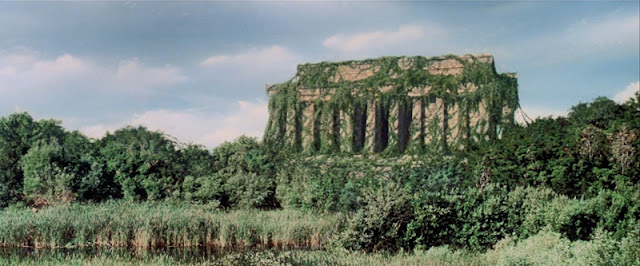
Jerry Goldsmith, who always had a knack for making a good
movie even better, delivers yet another knockout score, elevating Logan’s
Run to epic proportions. The diverse score demonstrates a range that reflects
the story’s changing settings, with synth-heavy music in the sealed city (evocative
of the tech-controlled habitat). Once Logan and Jessica are outside the domes, the
score shifts to a more traditional orchestral sound.
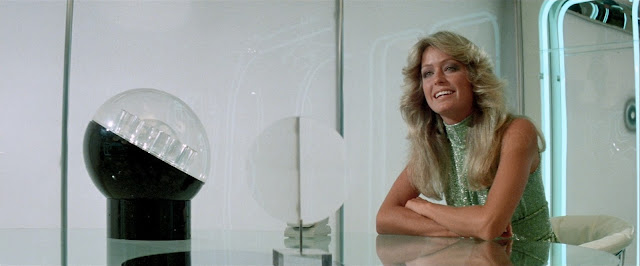
The problem with depicting any future society is that we’re
bound by our present-day expectations. What you end up with is a future that
resembles the present of 1976,* with cathode ray tubes, and feathered hair (as
modeled by Ms. Fawcett, herself). And there’s that time-worn old trope that was
stale a decade before in Star Trek: Confuse the giant computer until giant
computer goes boom! Amidst these dated trappings are some universal themes that
continue to be relevant: the unsavory implication of eugenics as a means of
controlling populations, along with the theme of “out with the old, in with the
new” as older generations feel pushed out by their younger counterparts. In the
overall scheme of things, everyone has an expiration date – the curse of being
human is that you are aware of your mortality. Thankfully, however, we don’t
know when that expiration date is… yet. As long as you don’t ask too many
questions (Accepting Logan’s eventual shift asks us to overlook his murderous past),
Logan’s Run is still a blast after all these years.
* Fun Fact #10: To date, there have been at least two ill-fated cinematic attempts to “renew” Logan’s Run, in 2000 (by writer/director Skip Woods) and 2010 (by Alex Garland).
Sources for this article: DVD commentary by Michael Anderson,
Michael York, and Bill Thomas (2009); “150 Cats Make Film Debut in MGM's
'Logan's Run',” Boxoffice (Aug. 11, 1975, 107); “Mechanical Effects for Logan’s
Run” and “Logan’s Run and How it Was Filmed,” American
Cinematographer (June, 1976); The Hollywood Reporter (April 19, 2000); The
Hollywood Reporter (June 17, 2010);

